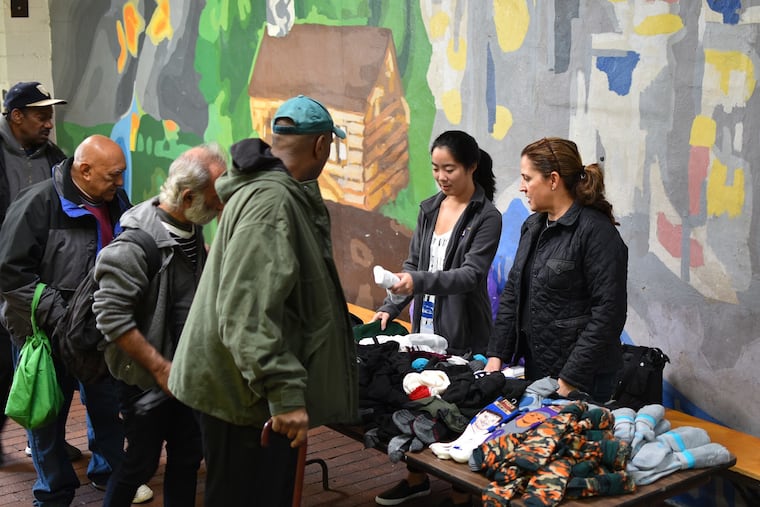Homes are the best medicine | Editorial
Philadelphia has an estimated 1,000 people living on the street, most of whom have addiction or mental health issues. Advocates say a home may be the best medicine.

Philadelphia’s own Sister Mary Scullion, who knows as much about fighting homelessness as anyone, wasn’t surprised by a recent finding that 76% of people living on the street in Los Angeles also live with serious mental illness, addiction, or other conditions. Scullion, the cofounder of Philly’s Project HOME, estimates that about 90% of the 1,000 people living on the street in this city also are living with addiction, mental health issues, or both. And simply having a home, she says, can help people overcome such challenges.
City officials say the experience of homelessness can worsen mental health and substance abuse disorder, and complicate treatment. It’s difficult to avoid using when the person sharing your makeshift tent is doing so. As Liz Hersh, director of Philadelphia’s Office of Homeless Services, observed: How can someone take their antidepressants or addiction treatment meds if they don’t have a pill case or a safe place to keep them?
The city’s Department of Behavioral Health annually spends about $90 million on treatment, residential placement, and other services for the thousands of homeless clients in the system. More resources are needed to pay for more affordable housing units to address the risks to personal and public health that inevitably arise when hundreds of people struggle to survive outdoors in Center City and elsewhere. The coming of colder weather makes this even more urgent.
People who are visibly experiencing homelessness — on the street, in public, in your face — are often perceived as hopeless, helpless, or unwilling to help themselves; a few are a danger to others. It may seem like solutions don’t exist or can’t work. But Philadelphia’s experience suggests that’s not the case.
» READ MORE: OPINION An addiction crisis disguised as a housing crisis on the West Coast | Opinion
Guided by a strategy called “Housing First” since the mid-2000s, the city and nonprofit partners offer safe haven, supportive, subsidized, and other programs that enable people not in acute crisis to transition immediately from the street to more conventional living arrangements. The city has about 5,000 such apartments or other units of temporary or more permanent housing (including 800 or more through Project HOME) but could use another 2,500.
Data show that a majority of people who are placed in housing, and utilize treatment for addiction or other mental health issues, don’t become homeless again. Some are able to go to work or back to school and live independently.
In recent years, Philadelphia has welcomed an increase in some federal funding to combat homelessness that nevertheless has not made up for far deeper cuts dating back to the early 1980s. A critical element of the city’s response to the opioid crisis has been housing, with an increase in shelter beds and permanent supportive housing. And Project HOME’s community investment partnership, called MPOWER, is attracting private donors to help fund construction of 200 units in the next two years, for a total of 1,000.
Most homelessness arises not from addiction or mental illness but from poverty. Philadelphia, the poorest of the nation’s largest cities, has especially high hurdles to clear. City Hall and partners like Project HOME are making inroads. But there’s much more work to be done.